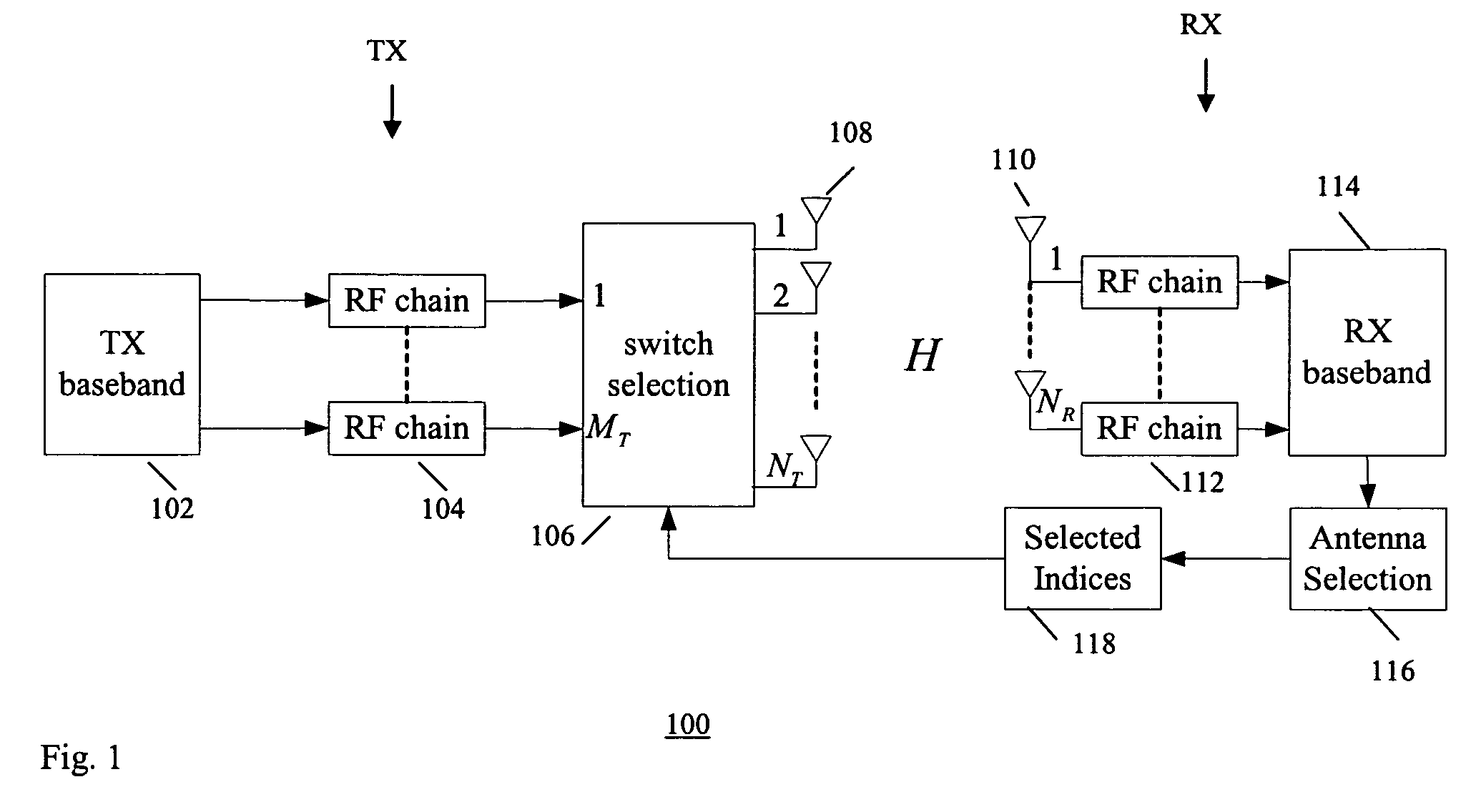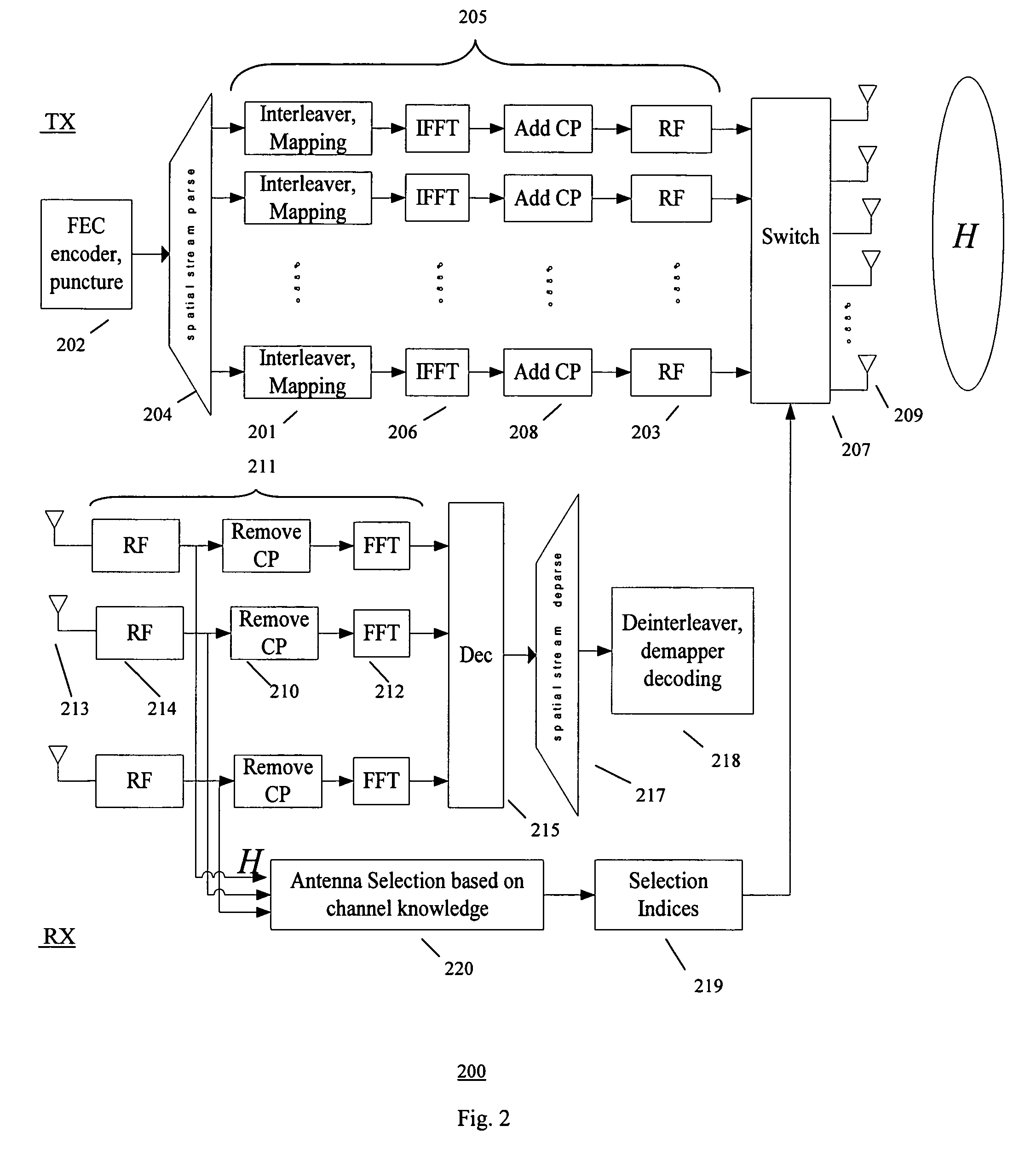Methods of antenna selection for downlink MIMO-OFDM transmission over spatial correlated channels
a technology of spatial correlation and antenna selection, applied in the field of data communication, can solve the problems of high cost owing to the price of rf chains (low noise amplifiers), and achieve the effects of reducing detection complexity, high performance, and reducing the cost of the mimo system
- Summary
- Abstract
- Description
- Claims
- Application Information
AI Technical Summary
Benefits of technology
Problems solved by technology
Method used
Image
Examples
Embodiment Construction
[0017]Antenna diversity schemes improve the performance of radio frequency (RF) communication between two RF devices. Antenna diversity refers to the existence of two or more signal paths that fade independently. This happens when the wireless channel includes several paths that are sufficiently separated in space, time, frequency or polarization. In this case, the paths are combined into a total signal with high quality. Antenna selection, where the “best” of M out of N antennas are chosen, is a solution to reduce the system complexity while retaining the diversity degree.
[0018]In one embodiment, the present invention provides an antenna selection technique (transmitter / receiver antenna selection) to reduce the cost of the MIMO systems while maintaining high performance. In the case of downlink transmission from access point (AP) to mobile station, where more antennas are installed at the AP, transmitter antenna selection can further reduce the detection complexity. The conventiona...
PUM
 Login to View More
Login to View More Abstract
Description
Claims
Application Information
 Login to View More
Login to View More - R&D
- Intellectual Property
- Life Sciences
- Materials
- Tech Scout
- Unparalleled Data Quality
- Higher Quality Content
- 60% Fewer Hallucinations
Browse by: Latest US Patents, China's latest patents, Technical Efficacy Thesaurus, Application Domain, Technology Topic, Popular Technical Reports.
© 2025 PatSnap. All rights reserved.Legal|Privacy policy|Modern Slavery Act Transparency Statement|Sitemap|About US| Contact US: help@patsnap.com



